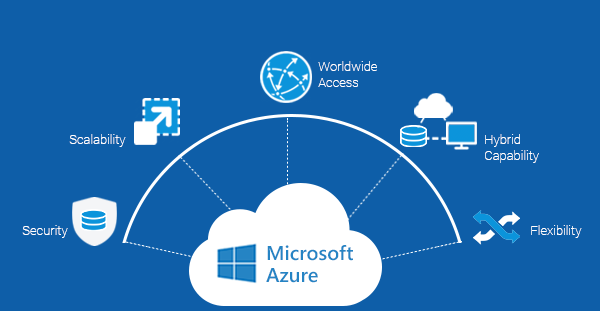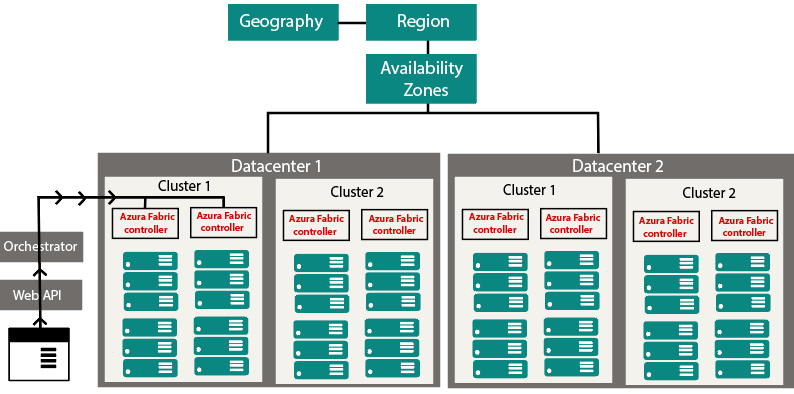At its core, Azure is a public cloud computing platform—with solutions including Infrastructure as a Service (IaaS), Platform as a Service (PaaS), and Software as a Service (SaaS) that can be used for services such as analytics, virtual computing, storage, networking, and much more.

It includes the Microsoft Azure Cloud Services, Azure Virtual Machines, Azure Website, and Azure Mobile Services, which processes the data on the cloud with the help of powerful processors.
This service is used to store data over the cloud that can be scaled according to the requirements. It includes Microsoft Azure Storage (Blob, Queue Table, and Azure File services), Azure SQL Database, and the Redis Cache.
It includes services, which help us to build and operate our application, like the Azure Active Directory, Service Bus for connecting distributed systems, HDInsight for processing big data, the Azure Scheduler, and the Azure Media Services.
It helps you to connect with the cloud and on-premises infrastructure, which includes Virtual Networks, Azure Content Delivery Network, and the Azure Traffic Manager.
It is essential to understand the internal workings of Azure so that we can design our applications on Azure effectively with high availability, data residency, resilience, etc.
Microsoft Azure is completely based on the concept of virtualization. So, similar to other virtualized data center, it also contains racks. Each rack has a separate power unit and network switch, and also each rack is integrated with a software called Fabric-Controller. This Fabric-controller is a distributed application, which is responsible for managing and monitoring servers within the rack. In case of any server failure, the Fabric-controller recognizes it and recovers it. And Each of these Fabric-Controller is, in turn, connected to a piece of software called Orchestrator. This Orchestrator includes web-services, Rest API to create, update, and delete resources.




Copyright @ b-transform.com. All Rights Reserved